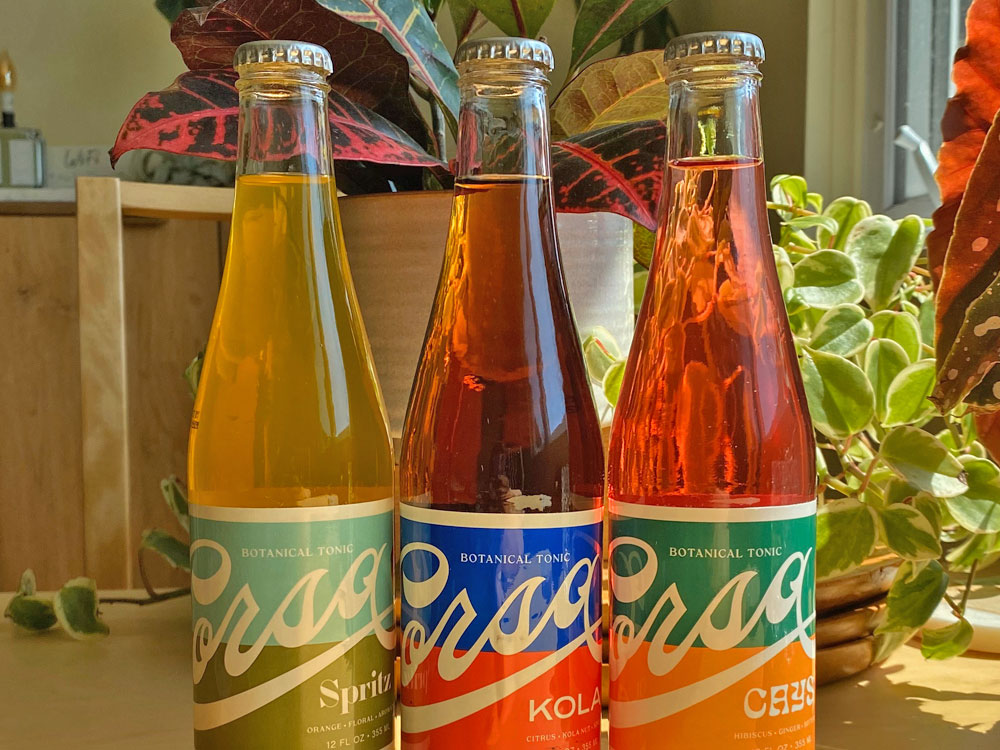3 Essential Items on Your Brand Checklist to Attract Your Ideal Clients
In this post, I’m showing you 3 essential items on your branding checklist that you absolutely need to have for your business to be on track and attract the right customers and clients for you. Are you on the right track?

I see it all the time.
Founders with a terrific new idea for a service or a product who come to me for brand identity services want to jump straight into the design phase. Why? Because the sooner we design all the pretty things, the sooner we can launch, and the sooner we make money.
Right?
Yes! Time is money, so of COURSE.
BUT: Not without doing the foundational work first.
I completely understand this urgency. But like anything that’s worth doing, it’s essential to set the foundation before building. Otherwise, we’d be building a house of cards. And months later, when you find yourself treading empty waters and wondering why your customers aren’t finding you, you’ve poured money down the drain and will end up doing the work you should’ve done before launching in the first place. So let’s do our homework now before we get punished later.
The theme of this entire post will be all about getting past the shiny surface and drilling down to the very core of 3 different facets of your business: Your ideal client, the problem you solve, and your competitors. Get ready to get deep!
Step 1: Define Your Ideal Client — Know Who You’re Serving
Note: You’ll see this post oscillate between using the word, “client” and “customer.” Both refer to the same thing – the person that your service and/or product appeals to – but depending on your specific market, you might prefer to use the word “customer” vs “client” and vice versa.
Knowing your target audience matters
Okay, first things first: Who is your target audience? Who are you serving? Who does your product and/or service help? Take a 30,000-foot view and describe this person roughly.
Here’s the formula:
[your business] + [action] + [target audience]
Here are some examples:
[My coffee brand] + [serves] + [busy working parents.]
-or-
[My financial planner service] + [caters to] + [young professionals.]
Think about who your target audience is and write it down.
The dangers of trying to serve everyone
Now, if you looked at this previous exercise and thought, “Well, my product is for everyone!” or, “My service helps everyone!“
To that I say, “Does it, though??”
Let’s look at the previous two target audience examples:
My coffee brand serves busy working parents.
Imagine if we instead shifted that statement so that our target audience is different:
My coffee brand serves Gen Z college students.
The way you brand and market your product for a working parent would be vastly different from the way you sell your product to a Gen Z college student. Each of these demographics value different things and have different spending habits. Each of these demographics also have different tastes, so you need very specific visuals to appeal to each group. By attempting to brand and market your product by using generalized language, you miss specific messaging moments, and thus, precious few seconds of opportunity to effectively engage your customer and make a sale. Your customer then ends up buying from someone who resonates directly to them.
By selling to everyone, you end up selling to no one.
Customer personas
Now that you’ve stated generally who your target audience is, now is the time to create customer personas. This means creating a theoretical profile of one singular individual that consists of their demographics, psychographics, and mindset.
For example: How old is this person? What are their hobbies? What is their general opinion and attitude about the service you offer or product you sell?
Determining these and more characteristics will help you picture exactly one person so that you can create a brand that appeals to and resonates more deeply with your target audience. And as a broader result, you create brand loyalty, because you’re speaking very directly to a specific person, and this will allow you to craft messaging that is more memorable and builds a strong connection between your service/product and your customer. You’re solving a very specific problem for a very specific person who is then ready to buy into your service/product.
Step 2: Define the Problem You Solve — Your Secret Sauce
You’re not just selling products — you’re solving a problem
Now that we know who you are serving, we can more accurately define what you offer to those you are serving. Let’s refer back to our coffee company example. How do we describe what we offer? Should we say, “I sell coffee”? Sure, that’s a great way to talk about your products… IF you want a person to zone out and forget about your brand.
You’re not just selling coffee. You’re solving a problem for your customers.
Instead, let’s try this:
My coffee brand gives busy working parents a moment of zen with every sip during a day filled with stress from their work and home.
Wow. Not bad, eh? That statement is a bit more memorable than, “I sell coffee.” Now you’ve got your customer’s attention, and they’re poised to learn more.
Importance of empathy in branding
Effective branding is all about empathizing with your ideal customer. In order to effectively create a brand identity that resonates with your customer, you need to address their specific needs by getting to know them, their values, habits, and tastes. You want to make them feel poised to listen to you and buy from you by attuning to their interests.
It’s much like making great conversation at a party. I know; this can be a nightmare for some people. But, why is it a nightmare? When is making conversation with strangers an awful experience? We’ve all been there. We’ve all been victim to a partygoer who sucks all of the air out of a conversation by talking all about themselves. When this happens to me, I feel exhausted. I’ve used all of my energy actively listening to a person I barely know. This person didn’t once ask about my interests, and I leave the conversation feeling frustrated and resentful.
If you don’t attune to your customers’ interests, you risk them feeling frustrated and resentful, or at best, completely indifferent to your offerings.
Framing problems from the customer’s point of view
Thus, it’s essential to frame your customers’ problems from their point of view. You need to show that you understand them and connect with them through very targeted and specific language in your brand messaging and brand visuals.
Step 3: Define Your Competitors — Know the Market to Stand Out
Branding in a competitive context
Branding is the process of shaping how your business is perceived in relation to others in your market, aka your competitors. As I always say, it’s not just about having a logo, colors, or a tagline; it’s about creating differentiation and clear positioning.
Now that you’ve defined who you’re serving and the problem that you solve for them, now is the time to list who your competitors are.
Branding in a competitive context is the art of creating and protecting your unique position in the market so customers choose you because of who you are, not just what you sell.
Direct vs. indirect competitors
When listing who your competitors are, think about them in two different categories: Direct Competitors and Indirect Competitors.
Direct Competitors are businesses that offer the same or a very similar product/service as you, targeting the same audience.
Example:
Going with our coffee brand example, a direct competitor would be simply another coffee shop down the street.
Indirect Competitors are businesses that don’t offer the exact same thing, but still solve the same problem or fulfill the same need in a different way.
Example:
A coffee brand vs. an energy drink brand. Both provide a caffeine or energy boost, but via different products.
I’ll offer another example: Yesterday, I wanted a sweet treat. My preferred ways to get a sugar fix? I love doughnuts, and I love cupcakes. I ended up getting a doughnut (vegan chocolate frosted from Stan’s YUM) at around noon. And when an opportunity came up later to get a cupcake, I passed on it, since I already attained my allotted sugar fix quota for the day with the doughnut. So in this case, Stan’s Donuts won, and that unnamed cupcake brand lost. (I’ll eat you next time, cupcake!)
So, it’s important to consider indirect competitors, because they can sneakily pull your audience’s attention or budget, even if they’re not “obvious rivals.”
Direct competitors = “who else they’d buy from if not you.”
Indirect competitors = “what else they might spend on instead of you.”
Defining who your competitors are is important so that you can hone your message even more succinctly to stand out from your competition.
Before You Go
I know when it comes to building your brand identity, doing this foundational (nay, FUNDAMENTAL) work is tough and not as fun as starting the design phase. However, creating the foundation for your brand identity is absolutely essential. Once you define your ideal client, define the problem that you solve for them, and define your competitors, you have a terrific start to creating a brand identity that is enduring, memorable, and connects strongly with your ideal customer.
And that’s it! You just learned 3 essential items on your brand checklist to attract your ideal clients.
How Brim Branding Can Help You
These 3 essentials items on your brand checklist are the foundational work of all brand identity services Brim Branding offers for our clients by kicking off with a Brand Discovery Session. During this live interactive session, we also dive deeper to explore your company’s specific brand attributes and help craft your brand story by defining what makes you unique. We also explore brand styles and figure out what kinds of visuals would be most appealing for your ideal client. By the end of these sessions, our clients walk away with clarity, a clear roadmap toward creating the perfect brand that will resonate with their ideal customer, and excitement that fuels the next phase of brand identity creation: The super fun and fruitful design phase.
If you would like to learn more, you can fill out this inquiry form, and you’ll hear from us in 48 hours.
I also offer a 30-minute complimentary consultation. Book here to set up your complimentary call.
If you need something more in-depth than a 30-minute call, I now offer quick branding and design consultative services by the hour called Brew Your Brand. Brew Your Brand is an a la carte creative thought partnership service that is completely customizable. YOU book me for the time you need and YOU set the agenda. Brim Branding is your judgement-free brand barista (or bartender, if you’re feeling spicy), ready to help shake up your brand with style, empathy, and authenticity. Book your Brew Your Brand call here.


